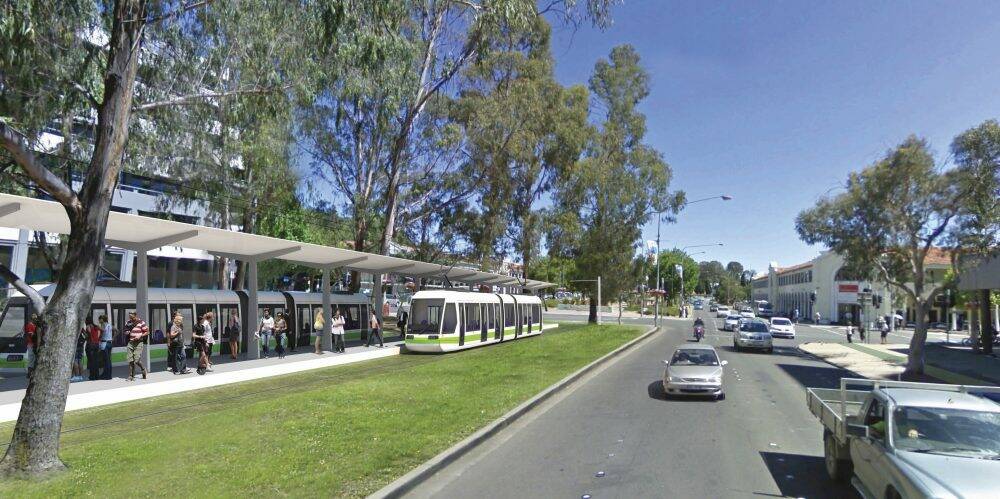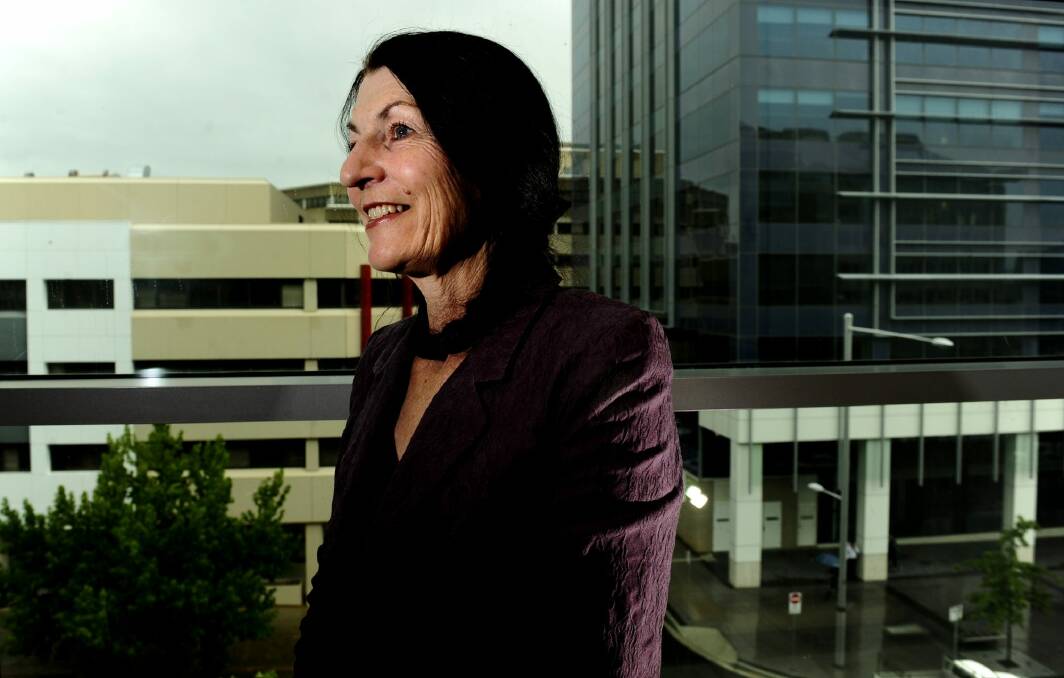The Auditor-General has warned caution over the government's cost-benefit analysis on the tram project, while highlighting the fast-changing calculations of costs and benefits in 2014.
Subscribe now for unlimited access.
$0/
(min cost $0)
or signup to continue reading
The government calculated a cost-benefit ratio of 1.2, meaning $1.20 of benefits for every $1 spent. But auditor Maxine Cooper said almost 60 per cent of the "benefits" were wider economic and land benefits whose inclusion was debatable. The transport benefits amounted to just 49 cents for every $1 spent.

The government had changed the figures significantly in versions of the business case in August and September 2014 before it was published in October. Transport benefits had been cut 26 per cent, land-use benefits boosted 17 per cent, and wider economic benefits boosted 17 per cent, with insufficient documentation to explain the rationale.
The audit also reveals the capital cost of the project was put at $1.01 billion in July 2014 by consultants Turner and Townsend. As a result, a "value-engineering workshop" was called "to allow Turner and Townsend an opportunity to clarify elements of the design for their costing assumptions" and to refine the design to reduce costs. In August 2014, Turner and Townsend revised the cost to $610 million, revising down costs, scrapping $100 million of "owners' costs" and scrapping a $227 million contingency.

It is clear that Chief Minister Andrew Barr was not happy with the scope of the audit when advised by Dr Cooper in December and April of the documents she was working from.
Dr Cooper said they included documents marked "cabinet in confidence" but not provided to cabinet, including a version of the business case for the board, a brief from the under-treasurer to the Treasurer in September 2014, a design report from Arup in July 2014, and the cost report done by Turner and Townsend in August 2014.
Her report said Mr Barr had told her that her analysis on the various iterations of the business case, including inputs by consultants and briefs from treasury, amounted to a review of Cabinet's decision and therefore exceeded her scope as auditor-general. But Dr Cooper disagreed, saying the material did not fit the definition of deliberative information and was in the public interest to disclose. She had, however, removed "some material" that could be considered to disclose a deliberation or decision of the executive.
The auditor clarifies the cost of the project, saying the nominal cost (not discounted to today's dollars) is $1.78 billion, including the $375 million lump sum, $1.27 billion in annual payments to the consortium over 20 years, and $130 million in government-retained risk, or contingency.
In present-value figures, the cost is $939 million (in January 2016 dollars, discounted at 7.52 per cent), including the lump sum at $305 million, $520 million in annual payments to the consortium, and $114 million in contingency.
Dr Cooper said the ACT budget would need to accommodate the expected cost, on top of the cost of the Capital Metro agency. Fare revenue, estimated at $81 million over 20 years (present value, July 2014), would partly offset costs.
On the cost-benefit analysis in 2014 (the construction costs have since been revised), Dr Cooper said costs had been estimated at $823 million (present-day 2014), against $984 million of benefits – broken down to $406 million in transport benefits, $381 million in wider economic benefits and $198 in land use benefits (essentially benefits to land owners and developers from higher-density housing).
But Infrastructure Australia's approach was to use wider economic benefits to add "texture" but to consider them separately. Commonwealth guidelines also urged caution, noting "serious measurement difficulties", and Dr Geoffrey Clifton from the University of Sydney said such benefits had "traditionally not been included in economic impact analysis and they are still not uniformly included".
On the changes from one version of the business case to another, the Capital Metro agency had argued they were refinements, and should be seen "as a positive sign of a robust review process", but Dr Cooper said while refinements were legitimate, these were "significant changes in the different components of the benefits associated with the project within a short time".
"By way of example, approximately $83 million [present value] in anticipated health benefits were identified in the full business case that was presented to the board on 15 August 2014 … which was reduced to $6 million in the full business case presented to the Capital Metro sub‐committee of Cabinet on 10 September 2014. The reduction in the anticipated health benefits associated with the project were offset by increases in wider economic benefits."
The business case had failed to consider negative consequences from the project.
Dr Cooper said governance, administrative and project management at Capital Metro was sound. She recommended independent external reviews of the project, reporting of costs, and as a high priority, a "benefits realisation plan" to ensure the stated benefits were achieved.

